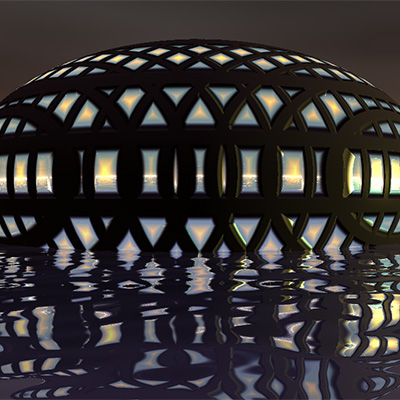

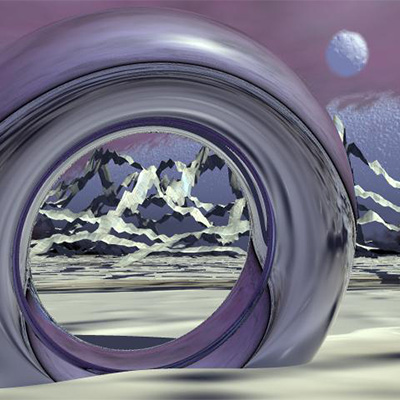



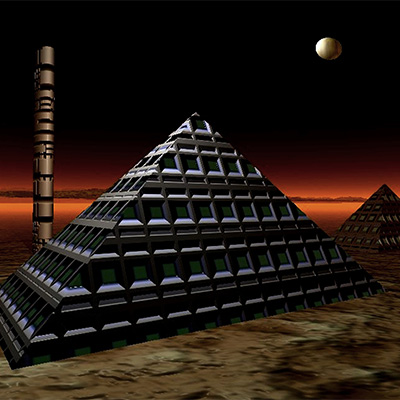



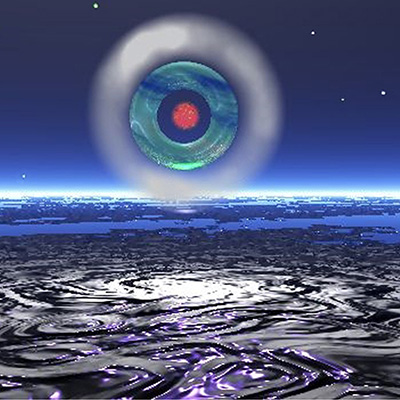

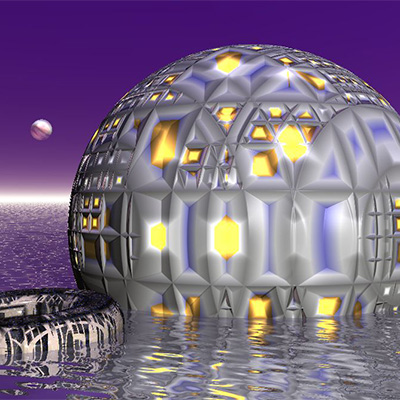

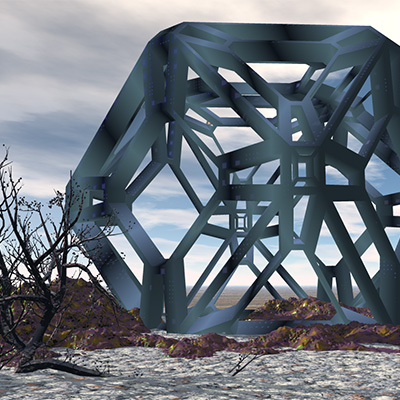

Programs Fantastic Worlds (1997-2000)
The pictures of the Fantastic Worlds series by Herbert W. Franke, not only a pioneer of algorithmic art, but also the most important German science fiction writer of the post-war period, were created with the software program Bryce for landscape structures, which had newly come onto the market in the mid-nineties and triggered a hype in the young scene of programming nerds. The program, developed by Kai Krause, was the first product of its kind on the PC market. For the first time ever this program allowed the rendering of spatial-perspective structures in optically congruent lighting with correct shadow casting and surface structures. And all without major programming skills and on PCs with low computing power.




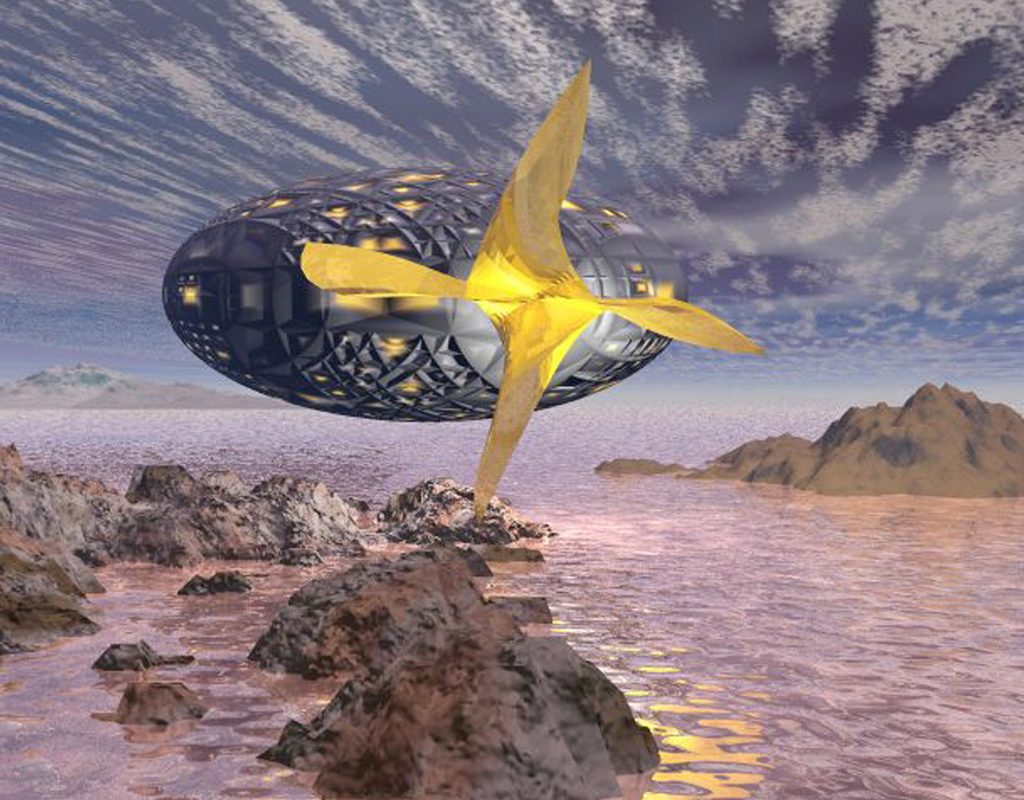

While rendering landscape structures was well possible with Bryce, the program did not offer possibilities to construct technoid objects. However, it was possible to embed RFX files via an interface. This gave Franke the idea of using the software Mathematica, to develop these technical objects in 3D, convert them into an RFX format and then import them into Bryce.
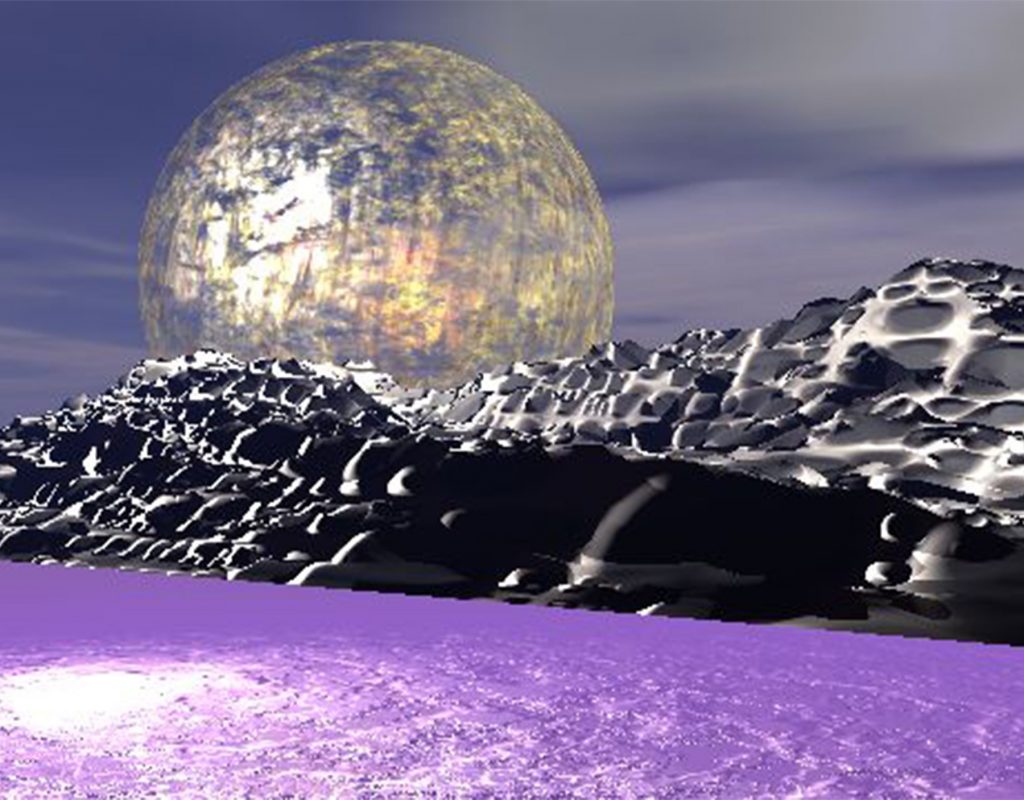



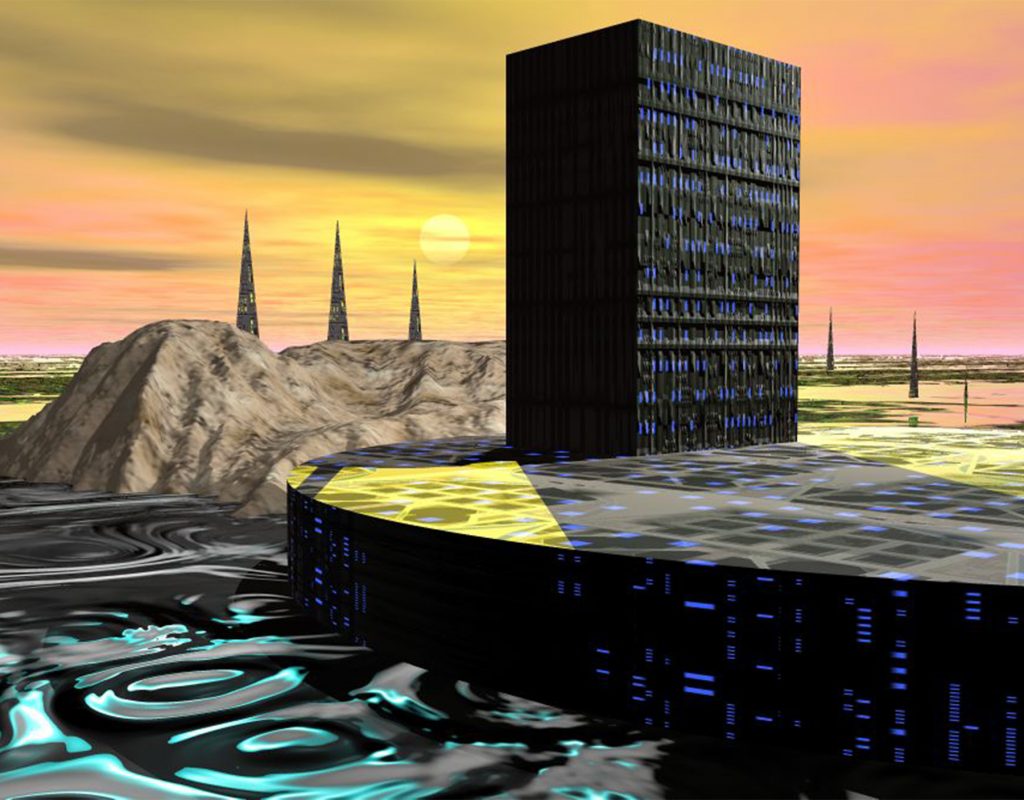

The series of Fantastic Worlds, which step out of the line of Herbert W. Franke’s usual, otherwise abstract art, date from the period 1997 to 2004. With the visual dimension of utopia, which is also noticeable in his literary fictional works, he was also able to experiment graphically on his own PC thanks to the combination of Bryce and Mathematica in this -for him unusual- body of works. He used a DOS PC with a 486 processor for this purpose.
Click here for the other series of personal computer:
Programs apple II and GS
Programs DEC Professional 350
Programs DOS-Calculator
Programs Cellular Automata
